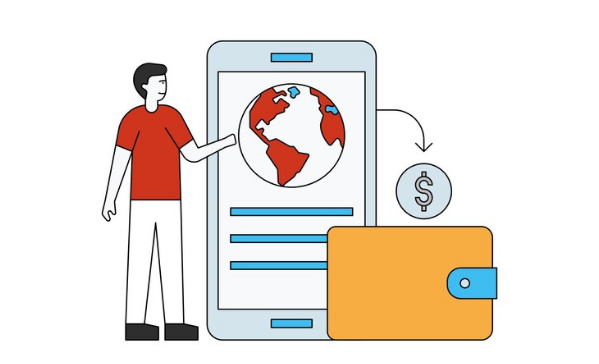In today’s fast-paced world, instant payment accounts in the US have revolutionized how individuals and businesses handle their financial transactions. This technological advancement enables users to transfer money quickly and efficiently, offering notable advantages but also presenting certain limitations. As we explore this topic, we will delve into the various pros and cons of these rapid transaction systems, providing a comprehensive understanding of how they impact users in the current financial landscape.
Instant payment systems have become a staple in the financial ecosystem, largely due to their ability to provide immediate fund transfer capabilities. Despite their growing popularity, it’s essential to weigh the positives against the potential downsides. This analysis will equip readers with the knowledge needed to make informed decisions about adopting such services for personal or professional use.
Understanding instant payment systems

The foundation of instant payment systems lies in their ability to process transactions in seconds, as opposed to traditional banking methods that could take several days. These systems leverage modern technology to facilitate the seamless and swift exchange of funds between accounts, enhancing convenience for users. Often operating 24/7, these systems defy regular banking hours, offering flexibility and immediacy.
Moreover, instant payment platforms typically boast user-friendly interfaces compatible with multiple devices, including smartphones and computers. They cater to a diverse user base, from tech-savvy millennials to older generations seeking ease of use. As these services continue to evolve, their integration with other financial technologies proves advantageous, fostering an interconnected ecosystem that streamlines various monetary activities.
Ease of use and accessibility
One of the notable benefits of instant payment accounts is their accessibility. Users can initiate transfers from the comfort of their homes or on the go, eliminating the need to visit a physical bank branch. The simplicity of the process further enhances accessibility, as transferring funds often requires just a few taps on a mobile device.
Furthermore, the reach of instant payment systems extends across borders, facilitating international transactions that were once cumbersome and time-consuming. By reducing dependency on traditional banking frameworks, these systems democratize financial operations, making them available to a broader audience.
Efficiency in financial management
Instant payment systems significantly enhance the efficiency of financial management. With real-time notifications and detailed transaction histories, users can maintain better oversight of their expenditures. This immediate feedback loop aids individuals in budgeting effectively, avoiding overspending and managing cash flow more adeptly.
For businesses, instant payments can streamline operations by reducing the settlement time for transactions. This efficiency translates into improved liquidity, as companies have quicker access to their funds, enabling them to meet operational expenses and invest in growth opportunities promptly.
The speed and transparency offered by instant payment systems also alleviate administrative burdens, such as reconciliation processes, which are typically labor-intensive. As a result, organizations can reallocate resources towards more strategic initiatives, enhancing overall productivity.
Potential drawbacks of instant payment systems
Despite their numerous benefits, instant payment accounts are not without their challenges. Security is a paramount concern, as rapid mechanisms pose unique risks in the digital age. While encryption and secure authentication are employed, the velocity of transactions can sometimes work in favor of fraudulent activities.
Furthermore, the immediacy of transactions means that errors can be difficult to rectify once they occur. For example, sending funds to an incorrect account or accidental duplicate payments are harder to reverse, potentially leading to financial losses. The intense competition and rapid development within this sector can also lead to disparities in system compatibility and service offerings.
Security concerns
The speed at which instant payments are processed can sometimes outpace the ability to detect and lessen fraudulent transactions. Cybercriminals continuously adapt to exploit vulnerabilities, seeking to compromise personal and financial data through phishing, malware, and social engineering tactics.
Thus, users must exercise vigilance when engaging with these platforms, ensuring they use secure networks and verifying the authenticity of service providers. Financial institutions and payment services must also remain proactive in identifying emerging threats and fortifying security measures against breaches.
Transactional irreversibility
Another limitation of instant payment systems is the irreversibility of transactions. Once funds are transferred, reversing the payment can be a complicated process, often requiring lengthy communication with customer support, if reversal is possible at all. This irreversibility underscores the importance of double-checking transaction details before confirming.
Users must be diligent in verifying recipient information and amounts, as mistakes could lead to unintended financial consequences. In scenarios where errors do occur, resolution often depends on the policies and responsiveness of the payment platform involved. Thus, prospective users should evaluate the customer support and dispute resolution frameworks offered by these systems while considering their use.
